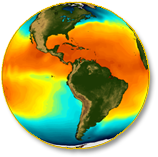Emission Scenarios  Concepts
Concepts
The IPCC uses emission scenarios as a central component of its work of assessing climate change research. Previously, the IPCC convened authors and modelers, provided terms of reference, and approved the scenarios through an intergovernmental process. This included the 1990 IPCC Scenario A (SA90) in the First Assessment Report, the 1992 IPCC Scenarios (IS92) used in the Third Assessment Report (TAR), and the Special Report on Emissions Scenarios (SRES) in TAR and the Fourth Assessment Report (AR4).
For the Fifth assessment report (AR5), the IPCC opted to employ scenarios developed by the research community. Four scenarios, called Representative Concentration Pathways (RCPs) were selected. They are defined by total radiative forcing, which includes emissions and subsequent interactions, through 2100. The four RCPs were chosen to represent a broad range of climate outcomes and are not considered to be forecasts nor policy recommendations. Most graphics in the IPCC Summary for Policy Makers show the lowest and highest RCP trajectories, as in the temperature projection graphic below.

Future projections in the Sixth IPCC Report (AR6) are based on 5 different scenarios called Shared Socio-economic Pathways (SSPs). The five scenarios (SSP1-1.9, SSP1-2.6, SSP2-4.5, SSP3-7.0, and SSP5-8.5. I) reflect choices society makes related to fossil fuels and carbon footprint.
The five scenarios, and general values, are as follows:
- SSP1: Sustainability ("Taking the Green Road")
- SSP2: Best Bet ("Middle of the Road")
- SSP3: Regional Rivalry ("A Rocky Road")
- SSP4: Inequality ("A Road Divided")
- SSP5: Fossil-fueled Development ("Taking the Highway")
